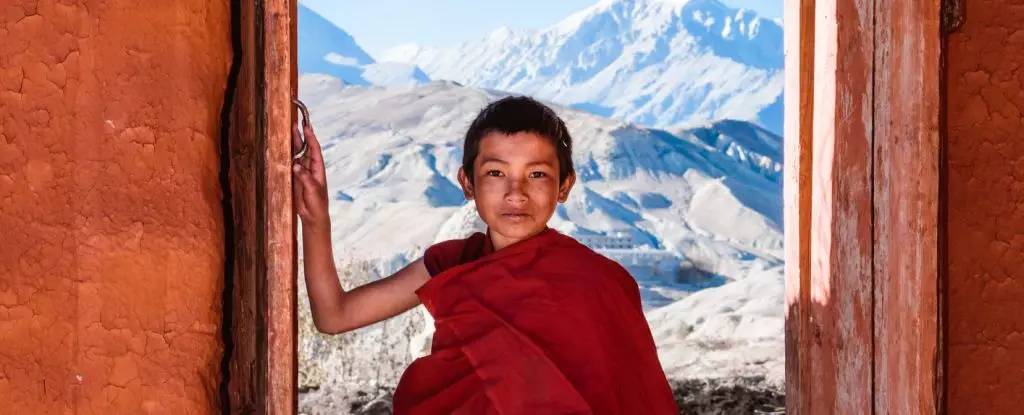Human evolution is a dynamic process, one that reflects our ability to adapt to ever-changing environmental challenges. This remarkable journey is not merely a relic of the past; it remains an ongoing narrative that shapes our biological makeup. As we continue to face diverse conditions, our bodies respond in ways that can be both surprising and enlightening. For instance, high-altitude environments, known for their thin air and lesser oxygen supply, present a particularly intriguing case study in human adaptability.
When venturing to high altitudes, such as the Tibetan Plateau, humans encounter obstacles like altitude sickness. This condition arises from the body’s struggle to deliver sufficient oxygen amidst diminished atmospheric pressure. Yet, surprisingly, communities in these high-altitude regions do not just survive—they thrive. Over the course of more than 10,000 years, these populations have adapted physiologically to make the most of their challenging environment, presenting a striking case of human resilience.
Insights from the Tibetan Plateau
Anthropological research sheds light on how Tibetan populations have achieved this remarkable adaptation. The essential question revolves around how these individuals have developed mechanisms to effectively utilize the limited oxygen available in their environment. Cynthia Beall, a prominent anthropologist, has dedicated much of her career to studying human responses to these extreme conditions. Her findings reveal that adaptability at high altitudes is not merely a matter of luck, but instead, a profound example of evolutionary adaptation driven by natural selection.
Research conducted on women in Tibet unveils the strategic traits that aid in oxygen delivery. In a groundbreaking study, Beall’s team scrutinized the reproductive success of women residing at altitudes exceeding 3,500 meters (11,480 feet). By examining the number of live births, along with measuring vital health indicators such as hemoglobin levels, they began to piece together the physiological tapestry that allows these women to navigate the challenges of high-altitude living.
The Dance of Hemoglobin and Reproductive Success
The researchers discovered an intriguing correlation between reproductive success and certain hemoglobin traits. While we often assume that higher hemoglobin would equate to better oxygen transport, the findings indicated a more nuanced reality. The women with the highest reproductive success exhibited average hemoglobin levels with elevated oxygen saturation. This optimal balance allows for efficient oxygen delivery without over-thickening the blood, a process that would burden the heart and impede overall health.
Interestingly, the results highlighted that the women with the greatest reproductive success also demonstrated significant blood flow to the lungs and broader left ventricles in their hearts. This combination of physiological traits enhances the body’s ability to utilize oxygen effectively, ensuring that even in an environment with limited air supply, the inhabitants can flourish.
Cultural Considerations in Adaptation
Cultural dynamics also play an essential role in shaping reproductive patterns in high-altitude regions. The study found that women who begin reproducing at younger ages and experience longer marriages tend to have more live births. While these factors contribute to the overall reproductive success, the biological advantages related to adaptation to low-oxygen environments cannot be overlooked.
The intersection of cultural practices and biological adaptations opens a fascinating dialogue about how humans can navigate environmental challenges. While the physiological adaptations enable women to thrive in a high-altitude setting, the cultural backdrop provides additional layers of complexity that contribute to reproductive outcomes.
Ongoing Natural Selection: A Living Timeline
The findings from the Tibetan Plateau are a compelling reminder that natural selection is not just a relic of ancient history but an ongoing force shaping our species. As we face new environmental pressures—be it climate change, urbanization, or other modern challenges—the lessons from high-altitude adaptations might offer insights into our collective future.
Cynthia Beall encapsulates this concept well: the adaptability of human beings displays a beautiful example of biological variation. The ongoing evolutionary changes underscore the resilience inherent in our species. As we learn more about the adaptive mechanisms employed by those living in extreme environments, we unlock the potential for understanding the broader narrative of human evolution and survival that continues to unfold around us.
In essence, the remarkable adaptability of Tibetan communities exemplifies not just survival but thriving against the odds, reminding us that the journey of human evolution is far from over.

